One of the main factors thanks to which a person has long been able to protect himself from the vagaries of the weather is the production of fabrics and clothing. Since its inception in ancient times, this industry has developed dynamically, and today the consumer is presented with a wide variety of materials made from both natural and synthetic components.
Depending on the type of production, fabric products are conventionally divided into several categories. The main ones are:
The range of modern fabrics is large, and this is due not only to the possibilities of using various raw materials. The finished material acquires its final characteristics through processing and the use of manufacturing technologies. In this case, the characteristics and properties are most often determined by the type of weave.
Among the variety of options, the consumer’s attention is attracted by the characteristics of the fabrics used in tailoring. Most often this is:
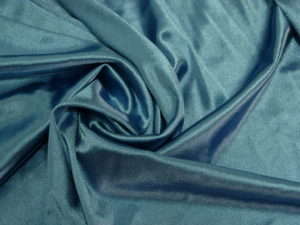 Inexpensive synthetics, which are made from polyester fibers. The surface is similar in appearance to wool, and in properties to cotton. Distinctive features that allow you to sew inexpensive clothes are strength, wear resistance and the ability of products to retain their original appearance for a long time. In addition, the characteristics of the fabric make it easy to wash, reducing clothing maintenance to a minimum. The material dries quickly and easily changes shape under the influence of temperatures. This opens up wide possibilities for designers when creating folds, decorating clothes, curtains, curtains, etc.
Inexpensive synthetics, which are made from polyester fibers. The surface is similar in appearance to wool, and in properties to cotton. Distinctive features that allow you to sew inexpensive clothes are strength, wear resistance and the ability of products to retain their original appearance for a long time. In addition, the characteristics of the fabric make it easy to wash, reducing clothing maintenance to a minimum. The material dries quickly and easily changes shape under the influence of temperatures. This opens up wide possibilities for designers when creating folds, decorating clothes, curtains, curtains, etc.
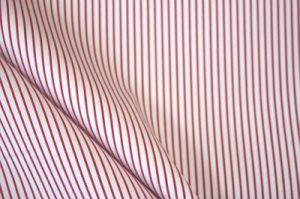 In the production of cotton fabric, soft and thin fibers are used, twisted along the axis. The material is characterized by high strength, resistance to chemical attack and the ability to maintain its original characteristics even under prolonged exposure to factors such as ultraviolet radiation, moisture, high and low temperatures. Fabric and clothing have an average hygroscopicity of 18-20%, so they dry slowly. The only drawback of the material is its low ability to retain shape and the risk of shrinkage if not properly cared for. Cotton products wrinkle quickly, which is not always convenient in everyday conditions.The advantages of this material include: extraordinary softness, breathability, durability. The scope of application of cotton fabrics is wide. The material becomes an excellent solution for sewing clothes and workwear, bed linen, furniture upholstery, etc.
In the production of cotton fabric, soft and thin fibers are used, twisted along the axis. The material is characterized by high strength, resistance to chemical attack and the ability to maintain its original characteristics even under prolonged exposure to factors such as ultraviolet radiation, moisture, high and low temperatures. Fabric and clothing have an average hygroscopicity of 18-20%, so they dry slowly. The only drawback of the material is its low ability to retain shape and the risk of shrinkage if not properly cared for. Cotton products wrinkle quickly, which is not always convenient in everyday conditions.The advantages of this material include: extraordinary softness, breathability, durability. The scope of application of cotton fabrics is wide. The material becomes an excellent solution for sewing clothes and workwear, bed linen, furniture upholstery, etc.
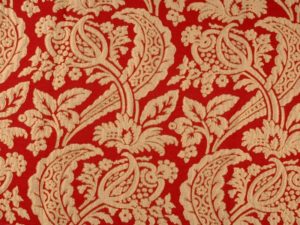 Large-patterned fabric obtained using the technology of weaving warp and weft threads. High aesthetic characteristics and the complexity of the production process make the material an elite-class product. Natural raw materials are used to create the canvas, including cotton and linen, as well as wool and silk threads. In modern production, synthetic fibers can also be used, as well as a combination of artificial and natural components. Manufacturing technology allows us to produce plain fabrics and fabrics with colored inserts. The “tapestry” effect is achieved using special dyeing methods. Today, jacquard is widely used in sewing outerwear, upholstery and other products. The cost of the material largely determines the raw materials, as well as the fabric processing technologies used.
Large-patterned fabric obtained using the technology of weaving warp and weft threads. High aesthetic characteristics and the complexity of the production process make the material an elite-class product. Natural raw materials are used to create the canvas, including cotton and linen, as well as wool and silk threads. In modern production, synthetic fibers can also be used, as well as a combination of artificial and natural components. Manufacturing technology allows us to produce plain fabrics and fabrics with colored inserts. The “tapestry” effect is achieved using special dyeing methods. Today, jacquard is widely used in sewing outerwear, upholstery and other products. The cost of the material largely determines the raw materials, as well as the fabric processing technologies used.
 Natural fabric, created using thread from a silkworm cocoon. The demand and extraordinary popularity of such fabric is due to the wide possibilities in the manufacture of clothing, in which the average person receives exquisite clothes that are comfortable to wear. Modern technologies make it possible to create artificial silk. However, the value of such material, as well as the characteristics, differ significantly from the real thing, made from silk thread.First of all, these include unique shine, smoothness and strength: indicators that are achieved thanks to multi-stage production and the characteristics of silkworm threads.
Natural fabric, created using thread from a silkworm cocoon. The demand and extraordinary popularity of such fabric is due to the wide possibilities in the manufacture of clothing, in which the average person receives exquisite clothes that are comfortable to wear. Modern technologies make it possible to create artificial silk. However, the value of such material, as well as the characteristics, differ significantly from the real thing, made from silk thread.First of all, these include unique shine, smoothness and strength: indicators that are achieved thanks to multi-stage production and the characteristics of silkworm threads.
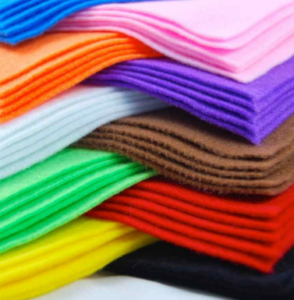 Like felt, felt is created using wool felting technology. The process is carried out manually, and its result is the production of pieces of material. Unlike its denser counterpart, the production of felt uses thin goat or rabbit fluff, thanks to which the fabric acquires its characteristic features. The creation of material today is somewhat different from the technology used in ancient times. With the advent of synthetic threads, it became possible to obtain smooth or fleecy fabric, which can also be divided into suede or long-pile felt subtypes. Most often, this material is used for sewing clothes that come into contact with the body. These can be hats, scarves, coats, etc. Thanks to the special texture of the fabric, such clothes can retain heat and create comfort when worn.
Like felt, felt is created using wool felting technology. The process is carried out manually, and its result is the production of pieces of material. Unlike its denser counterpart, the production of felt uses thin goat or rabbit fluff, thanks to which the fabric acquires its characteristic features. The creation of material today is somewhat different from the technology used in ancient times. With the advent of synthetic threads, it became possible to obtain smooth or fleecy fabric, which can also be divided into suede or long-pile felt subtypes. Most often, this material is used for sewing clothes that come into contact with the body. These can be hats, scarves, coats, etc. Thanks to the special texture of the fabric, such clothes can retain heat and create comfort when worn.
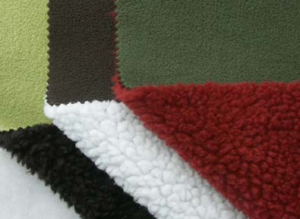 Synthetic fabric, which today is one of the most popular in tailoring clothes and products intended for everyday use. In the production of fabric, a combination of several types of artificial fibers is used, the main one of which is polyester. The result of using this technology is the production of fabric that is lightweight, resistant to moisture and easy to care for. Various production methods, at the same time, significantly expand the range of material thickness. Today, fleece is widely used for casual clothing and lining.The anti-pilling coating, which is often characteristic of modern fabrics, ensures the longest service life without loss of original characteristics. The main advantages of the material are hygroscopicity, lightness, and elasticity. Among the characteristics that provide comfort when wearing fleece clothing are breathability, the ability to dry quickly after washing, and minimal care and storage conditions.
Synthetic fabric, which today is one of the most popular in tailoring clothes and products intended for everyday use. In the production of fabric, a combination of several types of artificial fibers is used, the main one of which is polyester. The result of using this technology is the production of fabric that is lightweight, resistant to moisture and easy to care for. Various production methods, at the same time, significantly expand the range of material thickness. Today, fleece is widely used for casual clothing and lining.The anti-pilling coating, which is often characteristic of modern fabrics, ensures the longest service life without loss of original characteristics. The main advantages of the material are hygroscopicity, lightness, and elasticity. Among the characteristics that provide comfort when wearing fleece clothing are breathability, the ability to dry quickly after washing, and minimal care and storage conditions.
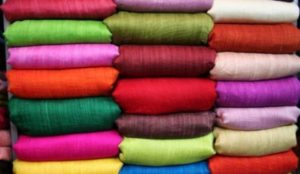 Thick fabric made from cotton threads. Thanks to the use of plain weave technology, manufacturers obtain a durable material that is widely used by people in everyday life. The main subtypes of calico, which are popular among the modern man in the street, are suvoraya, bleached, printed and plain-dyed fabric. Various manufacturing techniques make it possible to create high-performance fabric, which is widely used for the manufacture of bed linen, tablecloths, curtains and curtains, etc.
Thick fabric made from cotton threads. Thanks to the use of plain weave technology, manufacturers obtain a durable material that is widely used by people in everyday life. The main subtypes of calico, which are popular among the modern man in the street, are suvoraya, bleached, printed and plain-dyed fabric. Various manufacturing techniques make it possible to create high-performance fabric, which is widely used for the manufacture of bed linen, tablecloths, curtains and curtains, etc.
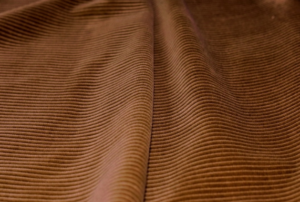 Cotton fabric (can also be synthetic), characterized by increased density. A special feature of the material is the presence of a front side covered with fleecy scars and a back side with a smooth surface. Among the characteristics of the fabric are high elasticity, strength, and durability. Clothing made from corduroy is very warm, pleasant to the touch, and durable. The advantage of this material is its affordable price. Disadvantages include the risk of shrinkage and loss of appearance due to improper care. In modern clothing production, several subtypes of corduroy are used, including: cord, ribbed and shaped corduroy.
Cotton fabric (can also be synthetic), characterized by increased density. A special feature of the material is the presence of a front side covered with fleecy scars and a back side with a smooth surface. Among the characteristics of the fabric are high elasticity, strength, and durability. Clothing made from corduroy is very warm, pleasant to the touch, and durable. The advantage of this material is its affordable price. Disadvantages include the risk of shrinkage and loss of appearance due to improper care. In modern clothing production, several subtypes of corduroy are used, including: cord, ribbed and shaped corduroy.
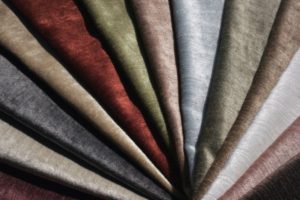 The fabric has a soft pile, is velvety and has high aesthetic appeal. The material in this category belongs to premium products and is widely used for sewing warm, practical, dense and wear-resistant clothing. Modern production allows us to produce several subtypes of velor. The main ones are: velvet and drape. Velor fabrics also include not only cotton materials, but also fabrics made from felt and leather.
The fabric has a soft pile, is velvety and has high aesthetic appeal. The material in this category belongs to premium products and is widely used for sewing warm, practical, dense and wear-resistant clothing. Modern production allows us to produce several subtypes of velor. The main ones are: velvet and drape. Velor fabrics also include not only cotton materials, but also fabrics made from felt and leather.
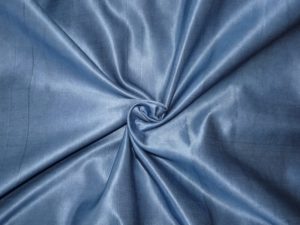 A material that is obtained artificially from natural raw materials. A special feature of this fabric is its ability to be similar (depending on the technology used) to linen, silk or wool. Viscose products are very popular. This is due to the affordable price and the opportunity to get clothes for everyday wear that have a maximum service life. In the production of household items today, three types of viscose are used: spatula, technical and textile, however, only the last category is suitable for sewing clothes.
A material that is obtained artificially from natural raw materials. A special feature of this fabric is its ability to be similar (depending on the technology used) to linen, silk or wool. Viscose products are very popular. This is due to the affordable price and the opportunity to get clothes for everyday wear that have a maximum service life. In the production of household items today, three types of viscose are used: spatula, technical and textile, however, only the last category is suitable for sewing clothes.
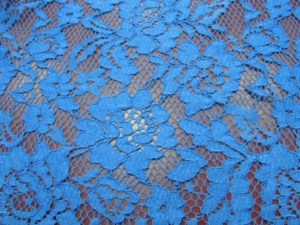 In modern industry, guipure is made from several types of synthetic fibers, or with their addition. The main features are transparency, low weight, and rigidity. Disadvantages include low tear resistance and demanding conditions for care, wearing and storage.
In modern industry, guipure is made from several types of synthetic fibers, or with their addition. The main features are transparency, low weight, and rigidity. Disadvantages include low tear resistance and demanding conditions for care, wearing and storage.
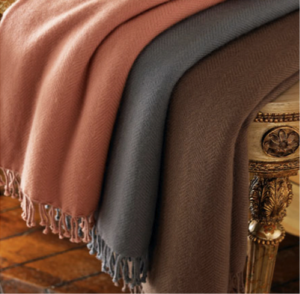 A distinctive characteristic of the material is its extreme softness and tenderness. This feature is achieved through complex production and twill weaving, which uses thread made from the down of cashmere goats. The high cost of linen, as well as cashmere clothing, is due to comfort, aesthetics and hypoallergenicity.It is believed that real cashmere can be made from the down of animals living only in Pakistan, India, Nepal and China. This is due to the fact that when trying to recreate the fabric from the wool of ordinary goats, all the unique properties of cashmere are lost.
A distinctive characteristic of the material is its extreme softness and tenderness. This feature is achieved through complex production and twill weaving, which uses thread made from the down of cashmere goats. The high cost of linen, as well as cashmere clothing, is due to comfort, aesthetics and hypoallergenicity.It is believed that real cashmere can be made from the down of animals living only in Pakistan, India, Nepal and China. This is due to the fact that when trying to recreate the fabric from the wool of ordinary goats, all the unique properties of cashmere are lost.
 The material is made from the wool of the Angora goat. The most common variety today are uniform white fabrics, which are distinguished by a soft luster shine. The unique effect of such a product is provided by technology that uses transitional hair. The result is a resilient, fluffy fabric with high tensile strength, resilience and durability. The natural shine characteristic of mohair does not disappear even after dyeing.
The material is made from the wool of the Angora goat. The most common variety today are uniform white fabrics, which are distinguished by a soft luster shine. The unique effect of such a product is provided by technology that uses transitional hair. The result is a resilient, fluffy fabric with high tensile strength, resilience and durability. The natural shine characteristic of mohair does not disappear even after dyeing.
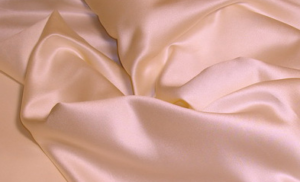 The fabric is made from cotton fibers using satin weaving. It is characterized by a smooth and silky surface, in which weft threads predominate. The most popular ones today are printed and bleached satin. This material is widely used in the production of bed linen, lining fabric and casual clothing. Less commonly, satin is used to make men's shirts and summer dresses.
The fabric is made from cotton fibers using satin weaving. It is characterized by a smooth and silky surface, in which weft threads predominate. The most popular ones today are printed and bleached satin. This material is widely used in the production of bed linen, lining fabric and casual clothing. Less commonly, satin is used to make men's shirts and summer dresses.
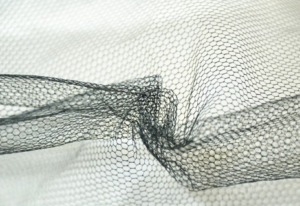 Modern tulle is distinguished by a mesh structure, which provides the fabric with flowing lightness. The material is made of polyester, which makes it homogeneous and extremely durable. The main area of use of tulle is the creation of decorative elements of clothing. Soft fabric is also used in gift making and interior decoration. The characteristics of mesh tulle allow it to be successfully used as a canvas for embroidery.
Modern tulle is distinguished by a mesh structure, which provides the fabric with flowing lightness. The material is made of polyester, which makes it homogeneous and extremely durable. The main area of use of tulle is the creation of decorative elements of clothing. Soft fabric is also used in gift making and interior decoration. The characteristics of mesh tulle allow it to be successfully used as a canvas for embroidery.
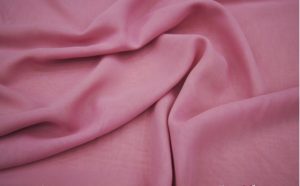 The lightweight, flowy material with a somewhat loose texture was originally made from silk and crepe yarn. Today, artificial components are used in production that can provide greater tensile strength and aesthetic appeal. The popularity of this type of material is due to the wide selection of varieties. The most famous and popular of them are: crepe chiffon, jacquard chiffon, double-sided chiffon and satin variety. Chiffon with lures, shanzhan, pearl chiffon, etc. are also used in the manufacture of designer clothing. Clothing items made from this material are distinguished by their elegance, lightness and comfort to wear.
The lightweight, flowy material with a somewhat loose texture was originally made from silk and crepe yarn. Today, artificial components are used in production that can provide greater tensile strength and aesthetic appeal. The popularity of this type of material is due to the wide selection of varieties. The most famous and popular of them are: crepe chiffon, jacquard chiffon, double-sided chiffon and satin variety. Chiffon with lures, shanzhan, pearl chiffon, etc. are also used in the manufacture of designer clothing. Clothing items made from this material are distinguished by their elegance, lightness and comfort to wear.